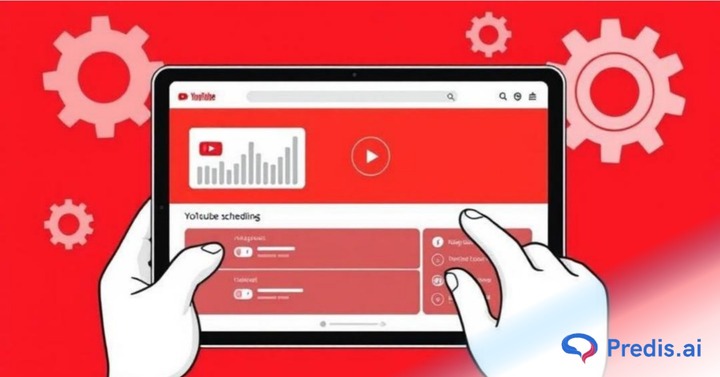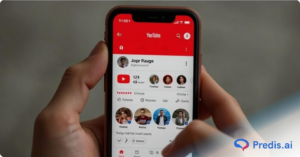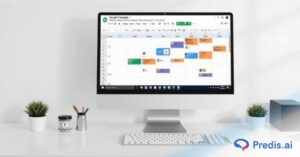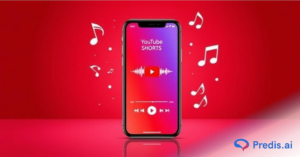You’ve heard it before, post daily if you want to grow on YouTube. But here’s the thing: ambition without a strategy is a shortcut to burnout. Whether you’re chasing the algorithm or building a loyal audience, posting without a plan won’t get you far.
This guide cuts through the noise. We’ll look at what works when it comes to how often you should post on YouTube, using data, creator experiments, algorithm insights, and real-world scheduling methods that won’t wreck your energy.
We’re not handing you a one-size-fits-all solution. Instead, you’ll learn how to build a YouTube content strategy based on your goals, niche, and capacity, whether you’re a solo creator, part-time YouTuber, or a brand trying to stay visible without constantly scrambling.
From figuring out your ideal YouTube posting frequency, to comparing YouTube Shorts vs long-form posting, to designing a batch video production schedule that works long-term, this guide is built to help you post smarter, not just more.
If you’re ready to unlock the best YouTube posting schedule for you, keep reading.
You’ll walk away with practical YouTube consistency tips, strategies to avoid YouTube burnout, and a clear, repeatable framework to grow your YouTube channel on your terms.
How Often Should You Post on YouTube? Frequency vs Quality
Let’s start with the obvious: how often you should post on YouTube depends on more than just hustle. You’re not just feeding the algorithm, you’re building trust with real people. And that means consistency trumps volume every time.

Why Consistency Matters
YouTube’s algorithm favors creators who show up regularly. That doesn’t mean you need to crank out daily uploads, but it does mean you need a reliable YouTube posting frequency that signals you’re active and committed. When your audience knows when to expect new content, they’re more likely to subscribe, return, and engage. That steady engagement fuels retention, which in turn boosts your reach.
In other words, a solid YouTube upload schedule helps you win on both sides: the algorithm and the audience.
The Sweet Spot: Weekly as the Baseline
For most creators, the best YouTube posting schedule is one high-quality video per week. Weekly uploads keep your channel active without sacrificing editing, scripting, or creative energy. It also gives you space to track performance, respond to comments, and stay inspired, crucial if you’re serious about how to grow your YouTube channel without burning out.
If you’re focused on long-form content, weekly pacing helps maintain storytelling quality while staying visible. If you’re adding YouTube Shorts vs long-form posting into your mix, you can boost frequency on Shorts while holding your long-form to a weekly rhythm.
The goal here isn’t volume for the sake of it. It’s sustainability. A well-paced batch video production schedule, planned with recovery time and content prep in mind, keeps your uploads flowing and your creativity intact
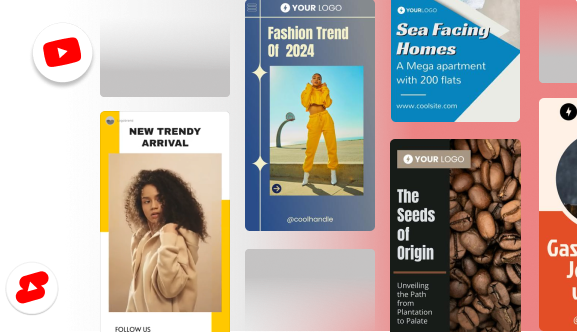
Lessons from Experiments
When it comes to how often you should post on YouTube, there’s no shortage of theories, but actual creator experiments tell a more honest story.
What Happens When You Post Daily?
Some creators have tested daily uploads and seen a jump in viewership, sometimes up to 25% more views. On paper, that sounds like a win. But here’s the trade-off: those gains come at the cost of time, energy, and usually, quality. It’s 7x the workload, not just in filming but in editing, uploading, titling, and promoting.
So while increasing your YouTube posting frequency can spike short-term performance, it often isn’t sustainable, especially if you’re managing your channel solo.
Batching & Scheduling: The Smarter Play
What works better over the long haul is developing a smart YouTube content strategy that allows you to produce consistently without running yourself into the ground. That’s where batching comes in.

With a solid batch video production schedule, creators record multiple videos in one go and schedule them ahead of time. This keeps your YouTube upload schedule predictable while giving you breathing room between production days. It also opens up time for audience engagement, channel optimization, and creative brainstorming, things that directly feed into how to grow your YouTube channel sustainably.
Weekly vs Tri-Weekly: The Realistic Middle Ground
A common takeaway from multiple creator case studies? Weekly uploads work best for most, but tri-weekly (3x per week) can be ideal if you have a team, shorter content, or a system in place.
For example:
- Long-form creators often do well with once-a-week uploads.
- Creators who mix in YouTube Shorts vs long-form posting can push out 2–3 Shorts weekly while keeping long-form to once per week.
- Channels with a tighter niche and less production-heavy videos may thrive on 2–3 uploads weekly without dropping quality.
So, how often should you post on YouTube? The answer lives somewhere between your creative limits and the consistency your audience expects. Push hard when you can. Pull back when you must. Just don’t ghost your schedule, your viewers, and the algorithm both notice.
Shorts vs Long‑Form
If you’re trying to figure out how often you should post on YouTube, you need to think beyond just frequency, you need to think about format. The algorithm treats short and long‑form videos differently, and understanding how they work together can seriously level up your YouTube content strategy.
Long‑Form Content: Depth Over Volume
For long‑form videos, quality matters more than quantity. These are the deep dives, tutorials, vlogs, and storytelling pieces that build trust and keep viewers watching longer. The ideal YouTube posting frequency for long‑form is about once a week, or even 1 to 3 times a month if the content is high quality and production-heavy.

Why it works: weekly uploads maintain consistency without sacrificing thoughtfulness or creativity. That rhythm keeps your audience engaged while allowing time for editing, feedback, and strategy, key factors in how to grow your YouTube channel with intention.
Shorts: High Frequency for High Visibility
Shorts are a different game. The best strategy here is volume. Posting niche specific Shorts 2 to 3 times per week or even daily helps boost reach and visibility. They show up in more feeds, get faster engagement, and are easy to produce in batches. This makes them perfect for a fast-moving YouTube upload schedule.

Shorts are especially useful for testing hooks, showcasing bite-sized tips, or teasing your long‑form videos. They feed the top of the content funnel, pulling new viewers into your channel and pointing them toward deeper content.
Why You Need Both
Here’s where things get strategic. It’s not about short-form or long‑form. It’s about how they support each other. While Shorts can spike views and attract new subscribers, long‑form content builds connection, authority, and watch time—the real drivers of long‑term channel growth.
Using a batch video production schedule for Shorts can help you stay consistent without draining your creative energy for long‑form. The result? A smart, balanced YouTube posting frequency that increases discoverability without leading to burnout.

Avoiding Burnout and Ensuring Quality
There’s a common trap creators fall into, assuming that more uploads automatically mean more growth. But here’s the reality: more content doesn’t always mean better results. If the quality drops or your energy tanks, growth stalls anyway.
Quality Always Beats Quantity
If you’re asking how often you should post on YouTube, the better question might be, how often can you post well? A cluttered YouTube upload schedule filled with rushed videos isn’t going to build a loyal audience. But one powerful video every week or even every month can make a bigger impact than daily content that’s forgettable.
The algorithm might reward frequency, but viewers reward value. If your content doesn’t land, no amount of posting will help you grow your YouTube channel.
Balance Is the Strategy
Sustainable success comes from knowing your pace. Some creators thrive posting two or three times a week. Others do better sticking to one polished video every other week. The key is designing a YouTube content strategy that keeps you showing up without burning out.
A smart way to do that? Build a batch video production schedule. Creating content in focused blocks lets you stay consistent while freeing up time to think, rest, and improve. It’s one of the best YouTube consistency tips for staying in the game long-term.
Case Study: When Less Is More
Plenty of successful creators have proven that high-quality, low-volume works. Think of niche educators, documentary storytellers, or in-depth reviewers. Some of them post just once a month, but every upload delivers serious value. That’s their best YouTube posting schedule because it matches their production style and audience expectations.
Growth Tactics for Posting Consistently
Once you’ve figured out how often you should post on YouTube, the next challenge is sticking to it. Consistency is what separates stagnant channels from ones that scale. But showing up regularly doesn’t have to mean being glued to your camera every day. It just means building smarter systems.
Use Batching and Scheduling Tools
One of the most effective YouTube consistency tips is to work in batches. Instead of filming and editing one video at a time, block out a day or two to record multiple videos in one session. Then use YouTube’s native scheduler tool or a tool to space out your uploads.

A well-planned batch video production schedule can keep your channel running smoothly even during your off days. It’s the difference between reactive content and strategic momentum.
Repurpose What You Already Have
You don’t always need to start from scratch. Repurposing content is a major time-saver and a powerful tactic within any YouTube content strategy. Take a longer video and break it into YouTube Shorts, turn highlight moments into teasers, or create themed playlists that keep viewers binge-watching.
This approach not only multiplies your content output but also supports a higher YouTube posting frequency without the burnout.
Promote Cross‑Platform
Creating great videos is only half the game. Promoting them across platforms like Instagram, TikTok, and Facebook Reels expands your reach and funnels new audiences to your channel. Short-form edits of your videos can act as previews that drive clicks.
It also strengthens your brand presence and keeps people engaged between uploads, which helps reinforce your YouTube upload schedule and pull in consistent traffic.
Make It Work for You
The best YouTube posting schedule is the one you can stick to. If your goal is to grow your YouTube channel, you need systems that support your creativity and protect your energy.
So ask yourself not just how often you should post on YouTube, but how can I post consistently without burning out? With the right tools, repurposing plan, and promotion strategy, you’ll be able to stay visible, stay sane, and keep building.
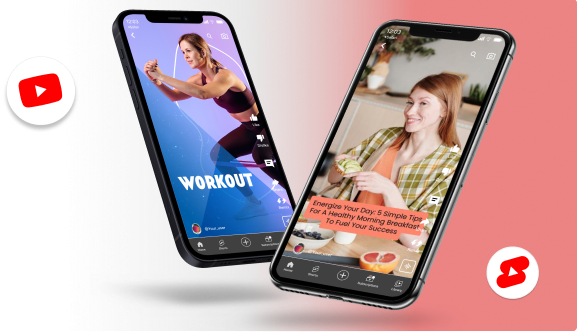
Final Plan & Takeaways
If you’re still wondering how often you should post on YouTube, here’s the clearest answer: start with what you can sustain. Consistency always beats overcommitment.
Start with a Sustainable Base
For most creators, weekly long-form uploads are a strong place to begin. It gives you time to plan, shoot, edit, and still breathe. If you’re including Shorts in your YouTube content strategy, aim for two to three per week to boost discoverability and engagement.
This mix supports a steady YouTube posting frequency without overwhelming your workflow.
Measure, Then Adjust
Use YouTube Analytics to track how each format performs. Watch time, click-through rate, retention, and comments all help you see what’s working. Don’t just guess, use your data to fine-tune your YouTube upload schedule. If one long-form video a week is crushing it, stay there. If Shorts are exploding, scale them up.
Growth happens when you build from what’s working.
Stick to a Rhythm
Whether you’re posting once a week or three times, keep it regular. Predictability builds trust. It trains your audience to check in, and it tells the algorithm your channel is active and reliable.
The best YouTube posting schedule is the one your audience can count on and your creativity can keep up with. Paired with a thoughtful batch video production schedule, this rhythm helps you stay consistent and avoid burnout or Ad fatigue.
Create Scroll-Stopping Shorts and Banners with Predis.ai
If you want to keep up with YouTube’s fast-moving content game, tools like Predis.ai can save you hours.

Use it to quickly turn long-form videos into engaging YouTube Shorts or Instagram Reels that stop the scroll. Just upload your clip, and Predis will help auto-generate hooks, captions, and visuals designed for mobile attention spans.
Need a YouTube banner image that looks clean on all devices? Predis.ai has templates built to fit perfectly across desktop, tablet, and phone views, no design background required.
For creators juggling content and consistency, Predis isn’t just a shortcut. It’s a smart part of your workflow.
Make Faceless YouTube shorts with AI 🤩
Conclusion
Let’s bring it all together.
When it comes to how often you should post on YouTube, consistency beats frequency, but frequency still matters if you can maintain quality. There’s no one-size-fits-all answer. Your niche, workflow, and creative capacity all shape what the right YouTube posting frequency looks like for you.
What matters most is that you pick a schedule you can stick to, whether that’s weekly long-form videos, several YouTube Shorts, or a mix of both. The key is to show up reliably and build trust, both with your audience and the algorithm.
So here’s your next step:
- Choose your starting pace. One long-form video a week? Three Shorts? Set it.
- Stick to it for a month.
- Track your metrics.
- Then tweak your YouTube upload schedule based on what’s working.
That’s how you develop a strong YouTube content strategy, grow your channel, and stay out of burnout mode.
Test. Learn. Adjust. Repeat – That’s the real game, and now you know how to play it!


